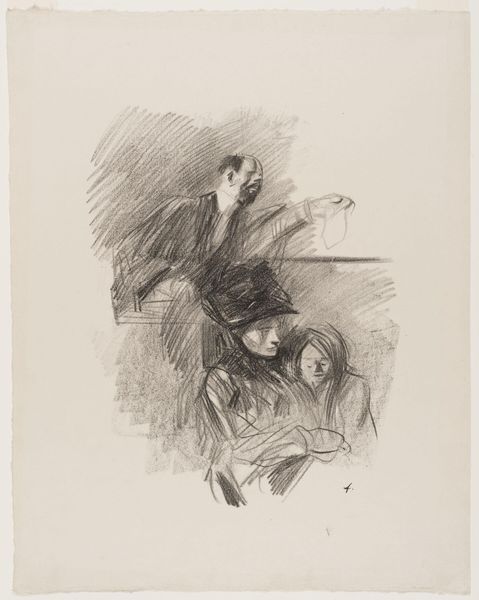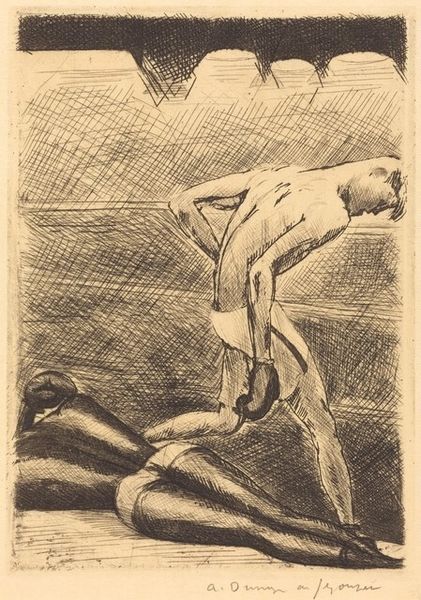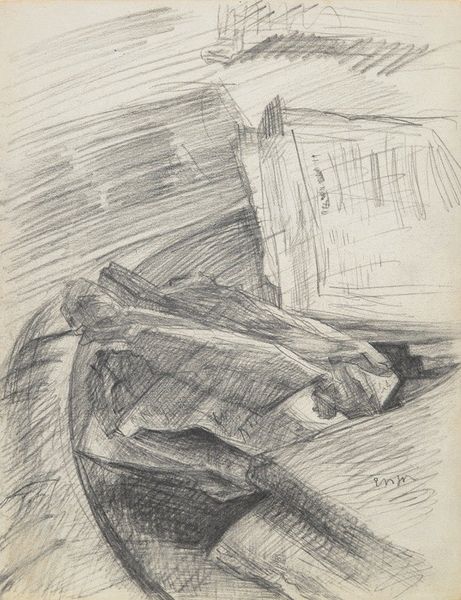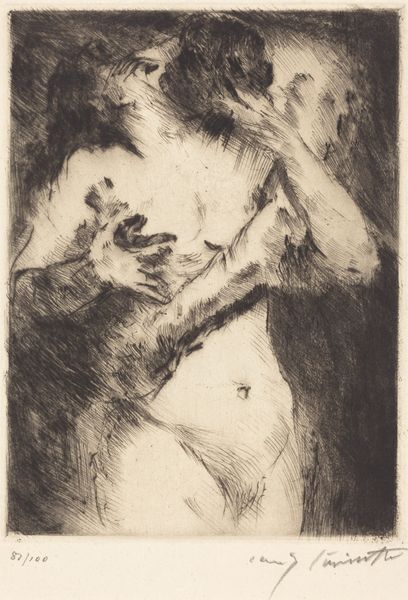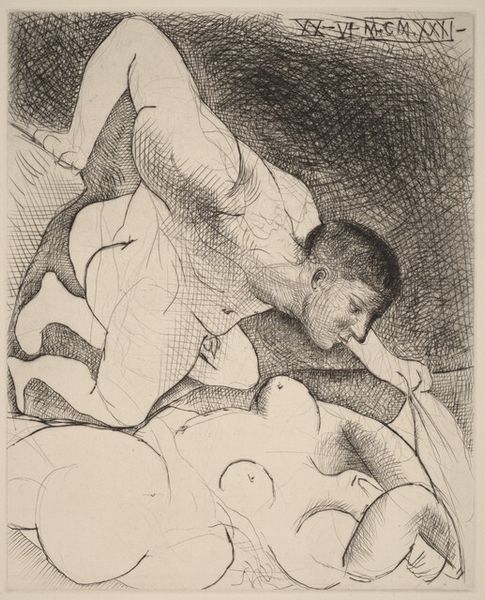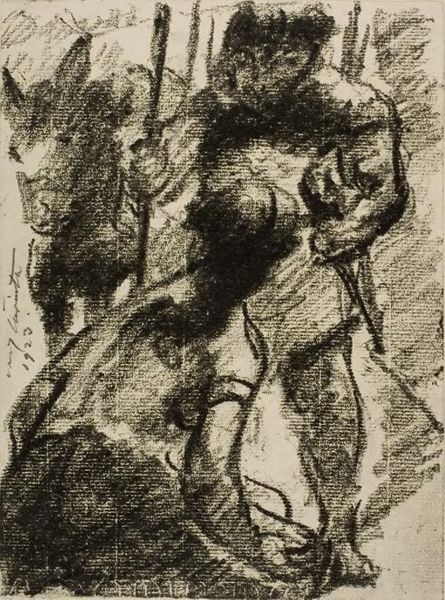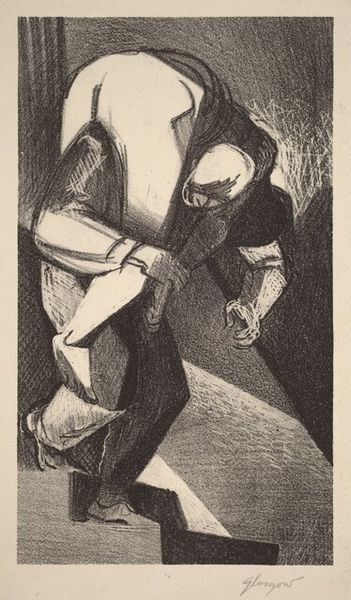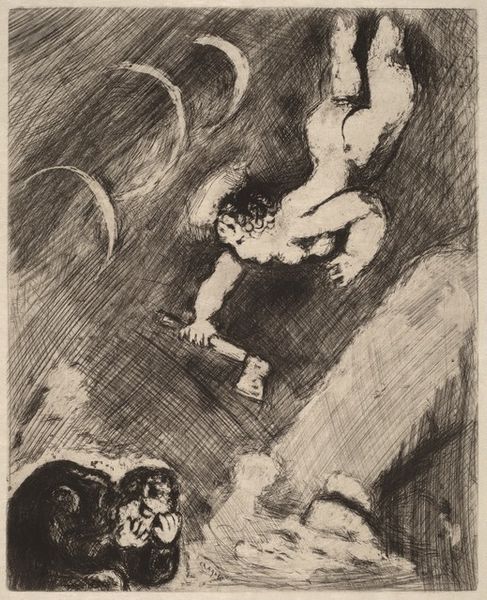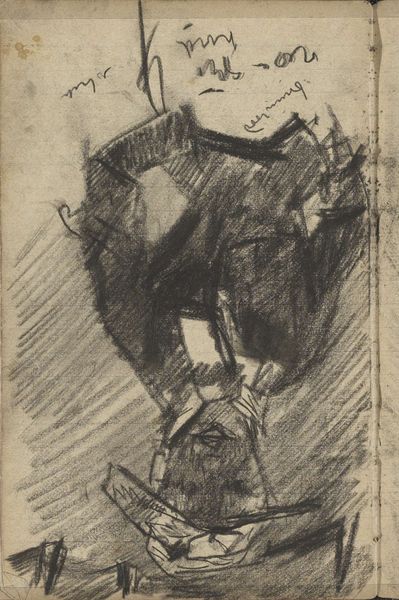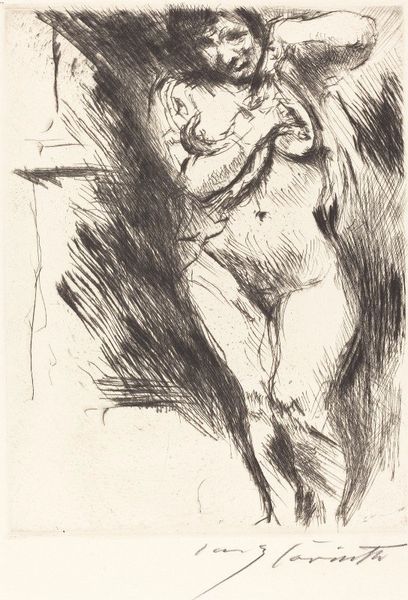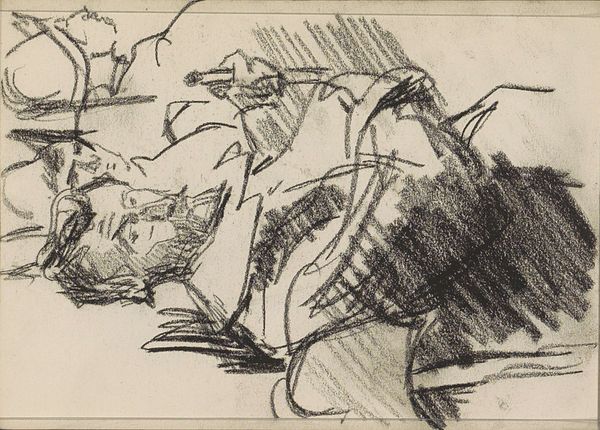
print, etching
#
portrait
# print
#
etching
#
figuration
#
pencil drawing
#
expressionism
#
modernism
Dimensions: plate: 11.8 x 9.5 cm (4 5/8 x 3 3/4 in.) sheet: 34.6 x 27 cm (13 5/8 x 10 5/8 in.)
Copyright: National Gallery of Art: CC0 1.0
Editor: Here we have Marc Chagall's "An Old Jew," created in 1922, an etching. There’s a somber quality to the lines, a rawness almost. What stands out to you in this piece? Curator: Notice how the etching process itself—the biting of the acid, the physical labor of creating the plate—directly shapes the image's mood. The dense, almost frantic lines don't just depict age; they are themselves evidence of the pressures and textures of lived experience. Editor: So, you’re saying the medium isn’t just a vehicle but an active participant in the expression? Curator: Precisely. And consider the social context. Etchings were relatively accessible; they were multiples meant for wider distribution than, say, a unique oil painting. Chagall is using a democratic medium to portray a subject often marginalized within society. Editor: That's a great point. I hadn't considered the accessibility aspect of the print itself relating to the subject. Were prints common in expressing the experience of Jewish people? Curator: Yes, particularly during times of persecution and displacement. The act of multiplying the image was, in a way, an act of resistance against erasure. It ensured visibility, created a material record of cultural identity. The material became inherently connected with the message, inextricably linking social and cultural statements with the labor of artistic practice. Editor: This really illuminates the work in a new way, considering the method alongside the message. I appreciate learning to see the print itself as part of the narrative. Curator: Exactly, and understanding the socio-political context within the labor intensivity of art practice really shifts how we appreciate artwork.
Comments
No comments
Be the first to comment and join the conversation on the ultimate creative platform.
